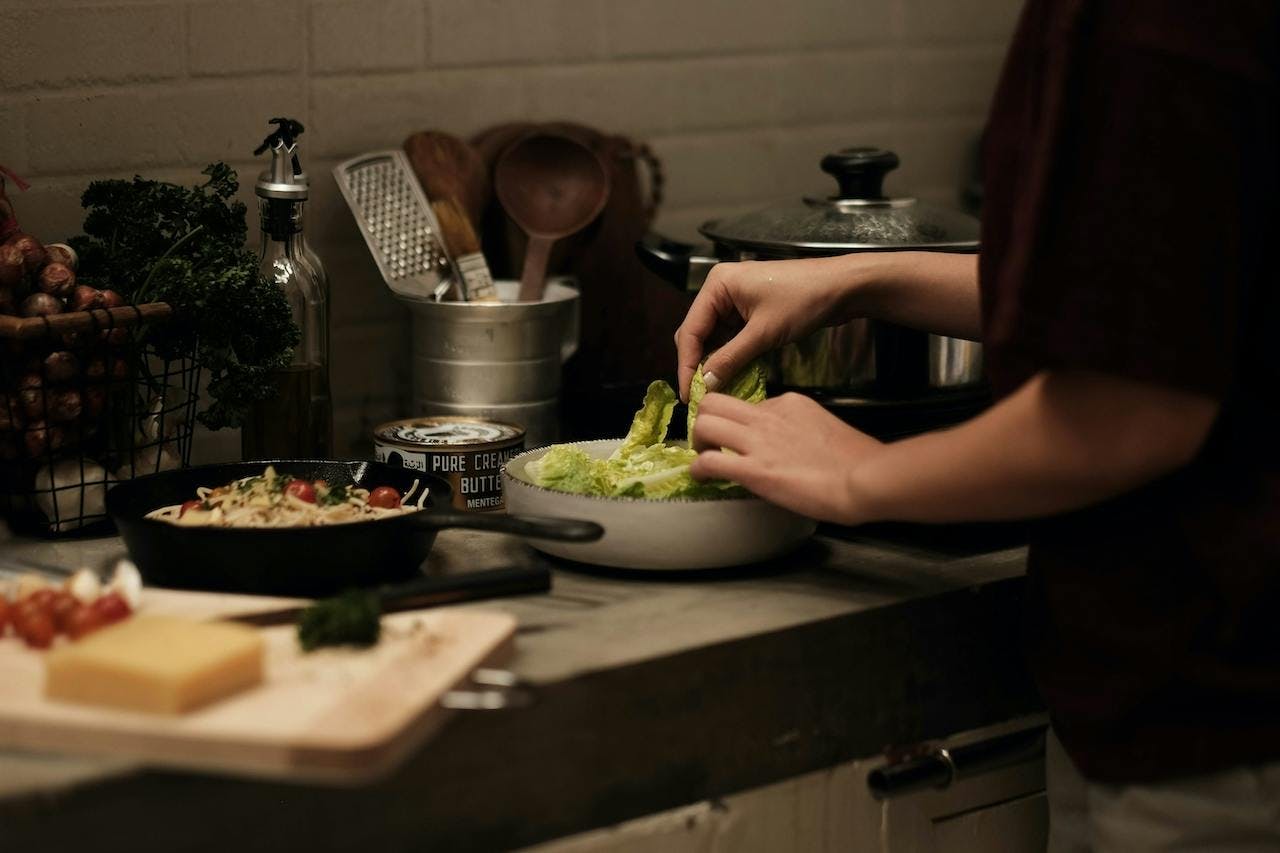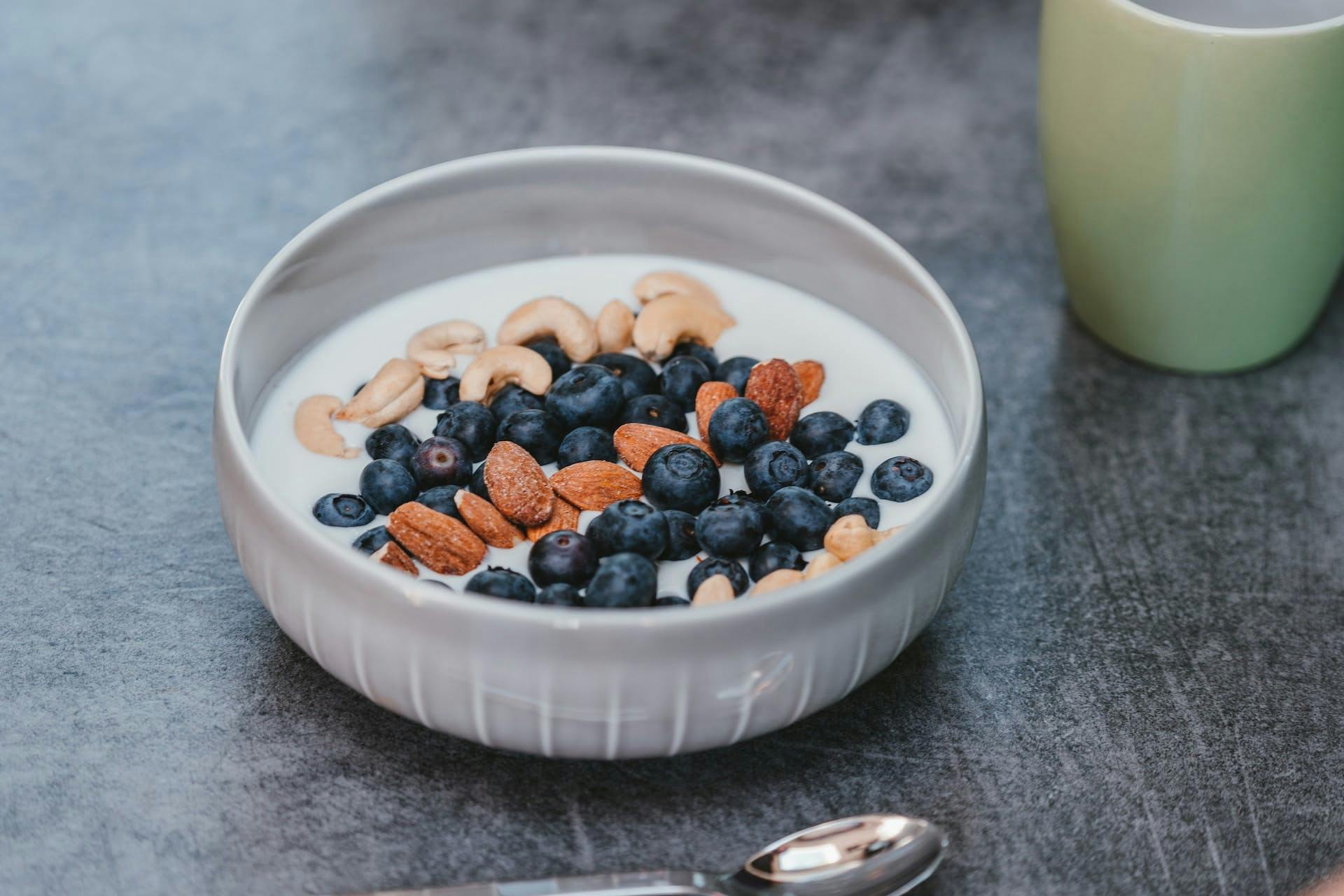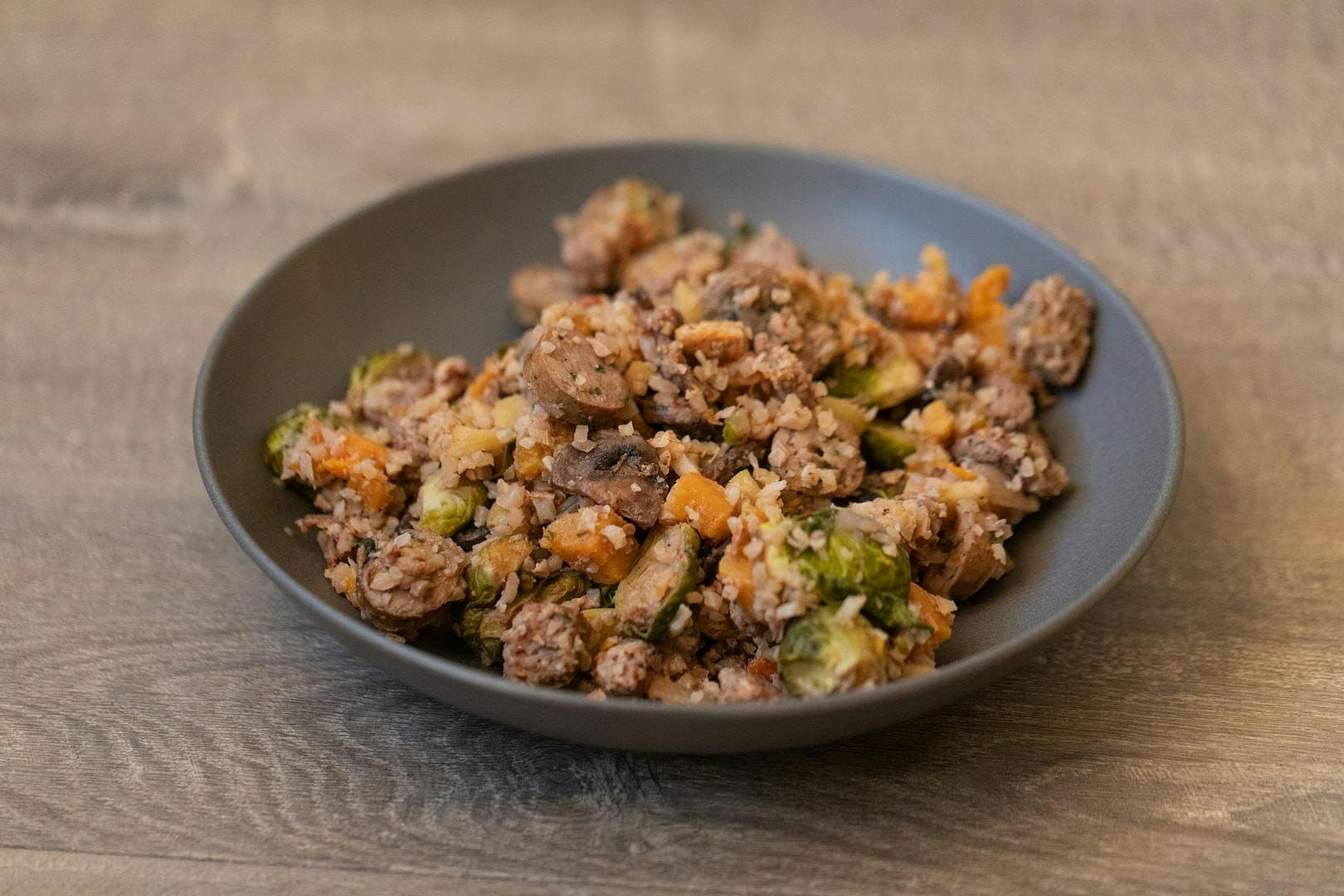One of the most important steps in maintaining a healthy weight is eating metabolically balanced meals. While this includes things like getting adequate fiber (to improve microbiome health and stabilize your glucose levels) and minimizing added sugar, one of the key components of healthy eating for weight loss is protein. Meals that are high in protein play an important role in satiety, glucose level management, body composition, and overall metabolic health. Here, we’ve put together three recipes that are high in protein and easy to incorporate into your day-to-day diet.
Why protein can help with weight loss
Eating protein can help with weight loss for several reasons:
- Satiety. Protein is more satiating than carbohydrates, meaning it can help you feel full for longer. When you eat protein, your body releases satiety hormones like glucagon-like peptide-1 (GLP-1) and peptide YY (PYY), which signal your brain to feel full or satisfied. Protein also takes longer to digest, prolonging feelings of fullness and reducing the number of calories you eat.
- Muscle preservation. Protein is essential for preserving muscle mass. Since muscle tissue is more metabolically active than fat tissue (i.e., it needs more energy), maintaining muscle mass by eating enough protein can help you burn more calories, even at rest — supporting weight loss efforts. Studies also indicate that eating protein can help you preserve fat-free (i.e., muscle) mass, which helps maintain the amount of energy you use at rest [1]. Losing fat-free mass can disrupt your metabolic rate and lead to weight gain.
- Blood glucose levels. Protein doesn’t have carbohydrates, meaning it has a glycemic index of 0 and doesn’t affect your blood sugar levels. In fact, pairing protein with carbs can slow the absorption of the carbs into the bloodstream — stabilizing your glucose levels and helping you avoid the “glucose rollercoaster” that triggers hunger spikes, energy dips, and more adverse symptoms.
- Appetite regulation. Protein affects the hormones that control hunger and satiety, such as ghrelin, helping to regulate appetite/reduce the likelihood of overeating.
When it comes to composing a glucose-friendly, high-protein meal, you can follow the plate method, where ½ of your plate contains non-starchy vegetables (broccoli, leafy greens), ¼ of your plate contains a lean protein (chicken, fish, tofu), and the remaining ¼ of your plate contains a high-fiber carbohydrate (beans, whole grains, fruits, etc.).
Here are three recipes to add to your weekly rotation.
1. High-protein berry pancakes
Estimated time: 15 minutes
Servings: 2
Ingredients:
- 2 large eggs, room temperature
- ½ c full-fat Greek yogurt1 tsp vanilla extract (unless protein powder already contains vanilla)
- 2 scoops protein powder (ideally whey or collagen)*
- 1 tsp baking powder
- Blueberries or blackberries to taste
- Maple syrup or honey (optional)
- Coconut oil for greasing the pan
Steps:
- Whisk eggs, vanilla (if using), and yogurt or sour cream in a bowl.
- Add protein powder and baking powder and continue whisking until smooth, no lumps.
- Heat a nonstick skillet over medium-low heat and grease with coconut oil.
- Using a ¼ cup measure (for larger pancakes) or 2 tbsps (for smaller pancakes), pour out the batter into the skillet. Add a handful of berries to the pancake batter in the pan. Wait for bubbles to form on the top before flipping, approximately one minute.
- Flip and cook for approximately 30 more seconds, until the other side is golden-brown.
- Serve immediately with maple syrup or honey (optional).
Why this recipe can help with weight loss
This high-protein recipe has minimal carbs and sugar (unless you’re adding maple syrup or honey), but is packed with healthy protein from eggs (~6g protein per egg), Greek yogurt (~2g protein per ¼ c), and protein powder — meaning you’ll feel full all morning without spiking your glucose levels. The berries add fiber as well as anthocyanins. Just make sure your protein powder doesn’t contain added sugar or artificial ingredients.
2. Pesto chicken quinoa bowl with roasted vegetables
Estimated time: 45 minutes
Servings: 3
Ingredients:
- ½ rotisserie chicken, shredded and skin removed
- ¼ - ½ c store-bought basil pesto*
- 1 c cherry tomatoes
- 2 c broccoli florets
- 2 tbsp extra-virgin olive oil
- 1 c quinoa, rinsed
- 1 ¾ c water or low-sodium/no-sodium chicken stock
- Salt and pepper to taste
- Paprika, Italian seasoning, or other dried herbs/spices to taste
- Toasted pine nuts (optional)
*If you’d like to make your own pesto, you can use this recipe [2].
Steps:
- Preheat oven to 400-F and line a baking sheet with parchment paper or foil.
- Spread broccoli florets and cherry tomatoes onto the baking sheet and drizzle with extra-virgin olive oil. Season with salt, pepper, and any other seasoning you’d like. Bake for ~20 minutes, until broccoli is tender and crispy.
- While the vegetables are roasting, combine quinoa and water or chicken stock in a medium saucepan and bring to a boil over medium-high heat. Reduce the heat to low, cover the saucepan, and let it simmer for ~15 minutes, until all the liquid is absorbed. Let it cool uncovered for 5 minutes.
- Take vegetables out of the oven once roasted and add to a large mixing bowl. Add shredded rotisserie chicken and combine with pesto (start with ¼ c and add more to taste).
- Spoon one serving of quinoa into a bowl or onto a plate and top with one serving of pesto-chicken-vegetable mixture. Garnish with toasted pine nuts and serve while hot. Repeat for other servings.
Why this recipe can help with weight loss
This simple weekday lunch or dinner is packed with quality lean protein from the rotisserie chicken and is low in refined carbohydrates that can spike your blood glucose. High-fiber whole foods like broccoli and quinoa can help with satiety and glucose regulation as well. The recipe also contains healthy monounsaturated and polyunsaturated fats from the extra-virgin olive oil and pine nuts, respectively, that may have cardioprotective benefits and are highly sating. Paired with the protein and high-fiber vegetables in this particular recipe, you’ll likely stay full for longer and eat fewer calories. If you prefer to eat this with rice instead of quinoa, try cooking and cooling your rice to increase its resistant starch content and prevent a glucose spike.
3. Anti-inflammatory salad with salmon
Estimated time: 30 minutes
Servings: 2
Ingredients:
- 2 salmon fillets (4oz each)
- 1 tbsp avocado oil
- 4 c spring mix or preferred greens
- 1 avocado, sliced
- ½ cucumber, shaved into thin slices
- ½ c radish, thinly sliced
- ½ c olives, halved (optional)
- ¼ c walnuts, toasted
- 2 tbsp pepitas, toasted
- 3 tbsp extra-virgin olive oil
- 2 tbsp red wine vinegar
- 1 tbsp Dijon mustard
- 1 tbsp water
Steps:
- Heat avocado oil in a skillet (nonstick, stainless steel, or cast iron are all fine) over medium-high heat. Season salmon fillets with salt and pepper and add them to the skillet, skin side down. Cook for 5-7 minutes until the skin is crispy, then flip and cook an additional 2-3 minutes. Remove from heat and let cool.
- In a small Mason jar, add extra-virgin olive oil, red wine vinegar, Dijon mustard, and water. Screw the lid on and shake until well-mixed, or use an immersion blender.
- In a large bowl, combine spring mix, cucumber, radish, olives, walnuts, and pepitas. Add dressing to taste (start with ¾ of the dressing and adjust) and mix everything together so the dressing is evenly distributed.
- Add spring mix to a plate or shallow bowl and top with avocado slices and salmon. Drizzle any remaining dressing on top of the salmon. Enjoy!
Why this recipe can help with weight loss
This simple salmon salad recipe is quick enough to whip up on a busy night, but is full of metabolically friendly ingredients that fall in line with the Mediterranean and anti-inflammatory diets, which can help counter insulin resistance (a key contributor to weight gain) and keep your glucose levels stable. The salmon is full of lean protein — which helps with satiety — as well as omega-3 fatty acids that are essential to human health. With no added sugar, this salad will keep you full without triggering a glucose spike. If you’ve completed an intense workout or want to add some healthy carbs, eat a piece of whole-grain toast with the salad or add some whole-grain croutons.


